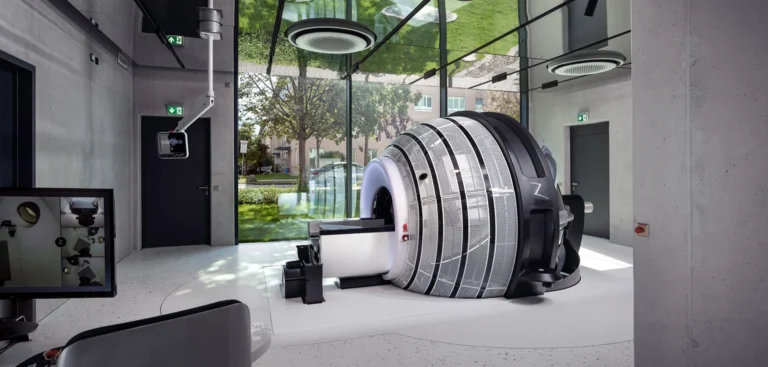DT Research, a leading provider of purpose-built computing solutions for vertical markets, and swyMed™, a top provider of telemedicine and connectivity solutions, announced that Washington County Regional Medical Center (WCRMC) is using their technologies for its EMS telemedicine services, supported by the PAVES (Prehospital and Ambulatory Virtual Emergency Services) network. The WCRMC mobile telemedicine system allows ambulance staff to remotely collaborate with physicians, enabling them to diagnose, triage, treat, and direct patients to the nearest appropriate care facility.
“We partnered with DT Research and swyMed to create a mobile system that connects EMS teams with WCRMC’s emergency department and, when needed, specialized medical experts across the region,” said Nathan Stanaway, MS, NRP, Project Manager for PAVES & SRDRS MOCC at Emory University School of Medicine. “By using reliable mobile video communication technology, we can enable remote consultations and expert support, significantly improving the quality of information shared without increasing the EMS staff’s workload.”
“A decentralized mobile telemedicine system is crucial for addressing healthcare disparities in rural areas and during patient surges,” said Dr. Michael J. Carr, Executive Director of Prehospital & Ambulatory Virtual Emergency Services (PAVES). “The WCRMC solution demonstrates how telemedicine—powered by DT Research’s rugged medical tablets and swyMed’s telehealth software—can drastically reduce time-to-care, involve more practitioners in patient treatment, and improve overall care outcomes.”
Mobile EMS Telemedicine System
The WCRMC mobile telemedicine system includes DT Research 313MD rugged medical tablets, designed specifically for use in ambulances, first responder vehicles, and emergency field operations. These tablets are ANSI/AAMI ES60601-1 certified, feature antimicrobial enclosures, and offer a slim, durable design with reliable fanless operation. The 13-inch sunlight-readable touchscreen provides a spacious work area, enhancing both user experience and workflow in critical environments.
In addition to the front and back cameras on the tablets, an Axis M5075-G PTZ pan-tilt-optical zoom camera is mounted in ambulances, providing EMS teams with hands-free, real-time visual feeds for remote medical consultations. The tablets are equipped with high-capacity, hot-swappable batteries to ensure continuous operation during emergencies.
The tablets run on Microsoft® Windows® IoT Enterprise, enabling seamless integration with emergency department systems and swyMed’s video telemedicine software. This software offers robust encryption and high-quality audio/video capabilities, allowing EMS teams to consult with specialists in real time, even in remote locations. An echo-canceling speaker and microphone ensure clear communication between physicians, patients, and EMS staff, allowing patient assessment and treatment to begin immediately upon entering the ambulance.
“With this technology, we can start treatment while still en route,” said Tetra Jenkins, Stroke and Trauma Program Coordinator at WCRMC. “For example, the emergency department physician can remotely initiate a stroke scale to assess the severity of the stroke and guide EMS staff in managing the patient’s blood pressure. This early intervention stabilizes the patient, so when they arrive at the hospital, our medical team can begin life-saving treatments immediately.”
WCRMC’s Director of EMS, Michael Padgett, also uses the system to address staffing shortages in EMS. “We often need to interpret a 12-lead EKG for cardiology patients on advanced life support,” said Padgett. “However, staffing shortages sometimes leave EMS teams without the expertise to interpret the test and administer the right medication. With this system, the emergency department physician can interpret the EKG and guide the EMS team in giving the correct medication.”
“We are proud to partner with Washington County Medical Center and swyMed to provide innovative, life-saving technology that empowers EMS teams in rural areas,” said Daw Tsai, President of DT Research. “Our rugged medical tablets, built for the most demanding mobile healthcare, mass casualty, and disaster response situations, enable critical care to begin before patients even reach the hospital. We are committed to advancing mobile technology that transforms healthcare delivery in underserved and emergency settings.”
“Partnering with DT Research and WCRMC allows us to expand our telemedicine capabilities to underserved areas,” said Jeff Urdan, CEO of swyMed. “In EMS, reliable communication is vital, and many video platforms fail in critical situations. Our patented data transport protocol ensures that swyMed’s live video technology works seamlessly, even in low-bandwidth environments, allowing EMS teams to conduct uninterrupted consultations with specialists, which ultimately improves patient care by delivering timely and accurate information when it matters most.”
About swyMed
swyMed is a leading provider of telemedicine and connectivity solutions, offering patented technology that extends telemedicine care to locations where it was previously unavailable. Its mobile, high-quality video solutions enable real-time remote consultations, even in low-bandwidth areas. swyMed’s technology is used by providers in remote patient evaluation, EMS/critical transport, mobile telestroke, and Mobile Integrated Healthcare (MIH) programs, with thousands of encounters across the U.S., Europe, the Middle East, and Asia.





